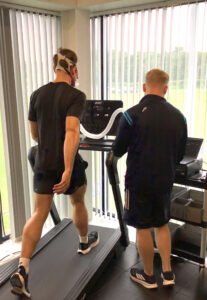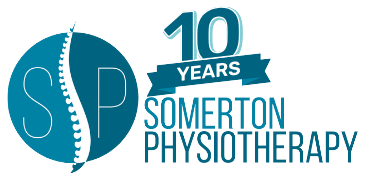VO₂ Max Test: Training Zones Explained
Training Zones Explained: Unlock Your Full Potential
If you want to train smarter, not just harder, understanding your personal training zones is essential. These zones represent specific intensity levels that dictate how your body produces energy from fat and glycogen using the aerobic system.
Simply put: your body performs differently at various levels of effort. By knowing your zones, you can tailor your workouts to trigger the right physiological responses whether your goal is burning fat, building endurance, or increasing speed.
Your training zones aren’t one-size-fits-all, they’re unique to you. Fitness level, age, and even genetics influence them. While traditional methods like heart rate monitoring are a helpful starting point, a VO₂ max test offers the most accurate way to define your true zones. This test measures not only your heart rate response but also oxygen usage and mechanical output (such as power or speed), giving you a complete picture of how your body works under stress.
Train smarter, not harder

Zone 1: Recovery & Reset (50–65% VO₂ Max)
The easiest, most relaxed zone, perfect for recovery runs, warm-ups, and cool-downs. You should feel comfortable and able to chat without effort.
What it Does:
- Boosts circulation to flush waste and deliver nutrients.
- Activates the parasympathetic nervous system (“rest and digest”) to reduce stress.
- Increases heart rate variability (HRV), a marker of good recovery capacity.
- Supports mental relaxation and reduces anxiety.
Tips:
Use Zone 1 for active recovery after hard efforts or on easy days. If you feel tired after a Zone 1 session, slow down next time, this zone should feel effortless.

Zone 2: Aerobic Base & Fat Burning (65–80% VO₂ Max)
The foundation of endurance training. You can speak in short sentences during this zone but not hold an easy conversation for long.
What it Does:
- Builds aerobic capacity and strengthens the cardiovascular system.
- Trains the body to use fat efficiently as a fuel source, sparing glycogen.
- Enhances muscle-level adaptations, such as mitochondrial growth and increased capillarisation, for better energy production.
- Improves metabolic flexibility for switching between fat and carb burning.
- Boosts recovery and stress resilience.
Tips:
Zone 2 is where endurance is made, arguably the most important zone for measurable improvements. Aim for steady, long runs (45–60+ minutes) to fully stimulate fat metabolism and mitochondrial development.

Zone 3: The “Grey ” Zone – Race Pace Familiarisation (80–85% VO₂ Max)
Zone 3 sits between easy aerobic work and hard threshold training. It offers fewer benefits than other zones because it isn’t low enough to improve endurance or high enough to significantly raise your VO₂ max.
What it Does (When Used Right):
- Helps you get used to holding a sustained race pace (such as for 10K or half-marathon distances).
- Improves breathing efficiency under moderate, sustained effort.
- Sharpens pacing, cadence, and mental focus for race-day conditions.
Caution:
Many athletes accidentally spend too much time in this zone without meaning to, leading to unnecessary fatigue without the fitness payoff. Use Zone 3 sparingly for tempo runs or race-pace practice only.
Zone 4: Threshold & Lactate Buffering (85–90% VO₂ Max)
The “lactate threshold” zone where your body learns to buffer and clear fatigue-causing byproducts like lactate—delaying the burn and allowing you to sustain higher intensities for longer.
What it Does:
- Raises your anaerobic threshold—letting you run faster before fatigue hits.
- Improves your muscles’ ability to tolerate and clear lactate and hydrogen ions.
- Develops both aerobic and anaerobic systems for all-around fitness.
- Builds mental toughness to handle discomfort and maintain form under stress.
Tips:
Zone 4 is intense, ideal for structured intervals or sustained tempo blocks. Taxing on the body, so prioritise recovery after these sessions to allow proper adaptation.

Zone 5: Maximal Effort & VO₂ Max Development (90–100% VO₂ Max)
Your top-end intensity. Used to increase your VO₂ max and expand your heart’s ability to deliver oxygen-rich blood at maximum demand.
What it Does:
- Raises the ceiling of your aerobic capacity (VO₂ max).
- Improves stroke volume (the amount of blood the heart pumps per beat).
- Enhances breathing capacity and oxygen delivery efficiency.
- Supports all other zones by increasing overall performance potential.
Tips:
Use Zone 5 for short, high-intensity intervals (30 sec–3 min) with full recovery in between. Limit to 1–2 sessions per week to avoid burnout or overtraining.

Why Training Zones Matter
Using training zones properly ensures every workout has a purpose, whether that’s building endurance, burning fat, improving race pace, or raising your aerobic ceiling. Without this structure, you risk training in a way that wears you out without delivering results.
VO₂ max testing offers the most accurate way to set these zones based on how your body actually performs, not just estimated heart rate formulas. With this knowledge, you can train precisely, recover better, and perform at your absolute best.
To find out more about our VO₂ max testing, click here. You can book an appointment to discuss VO₂ max testing at our Castleknock GAA Clubhouse Physiotherapy Clinic through our website www.somertonphysio.ie, email us at [email protected] or call us on 01 9069566
Please do not hesitate to contact us if you have any questions.
You can follow us on our Facebook page and Instagram for more updates.
